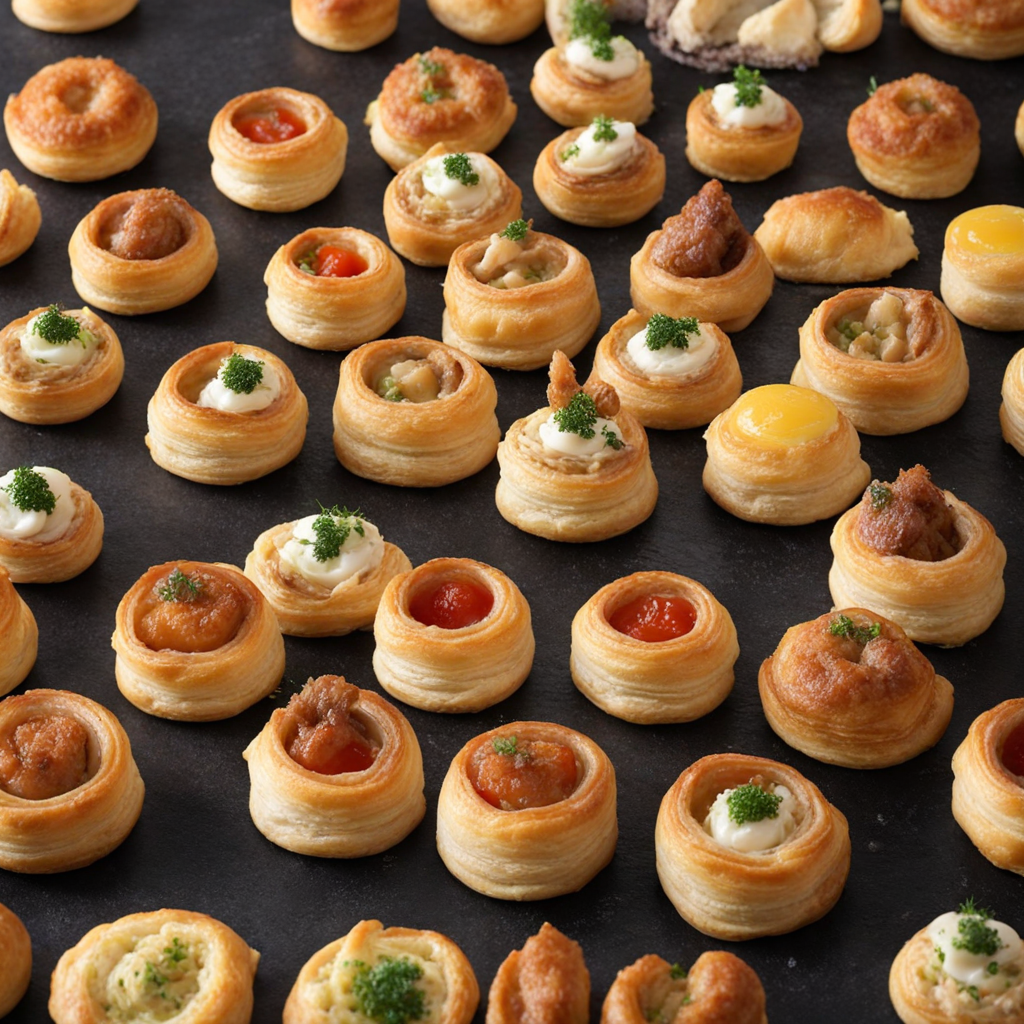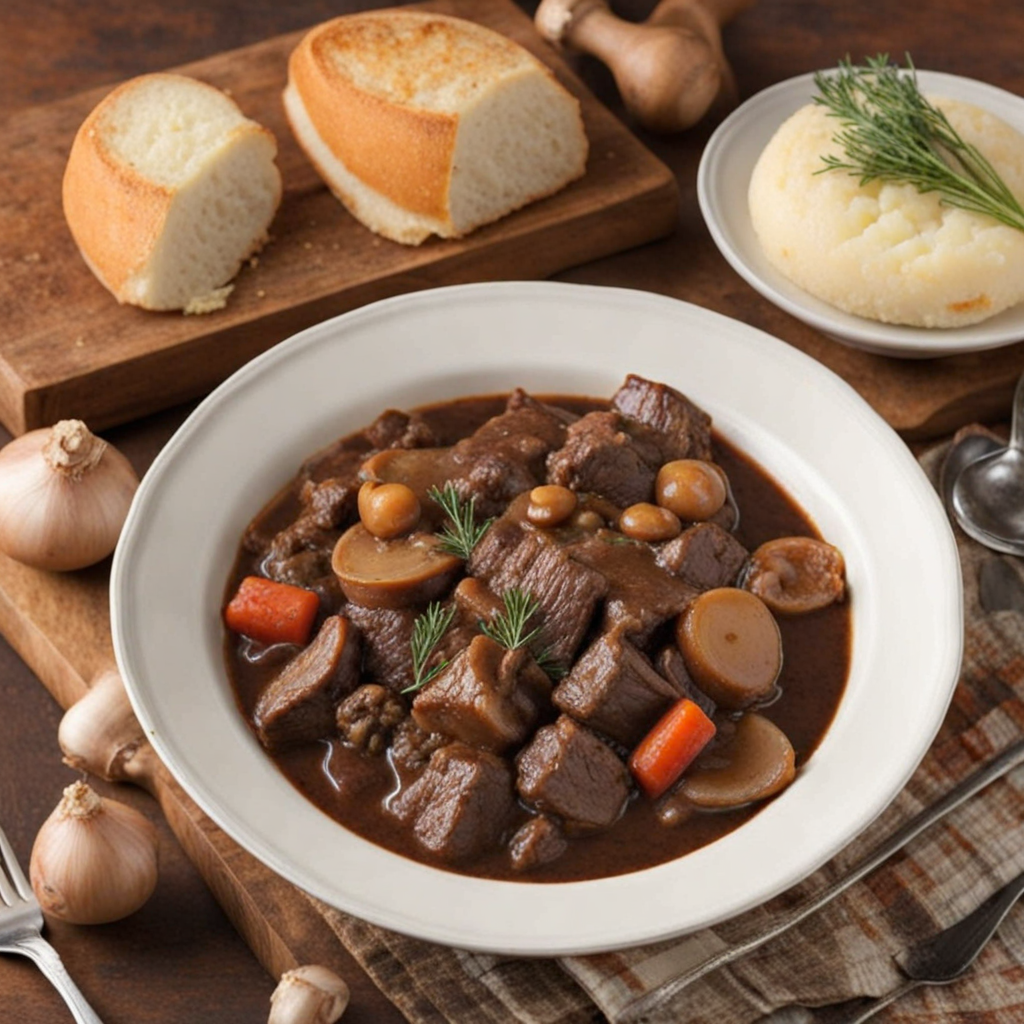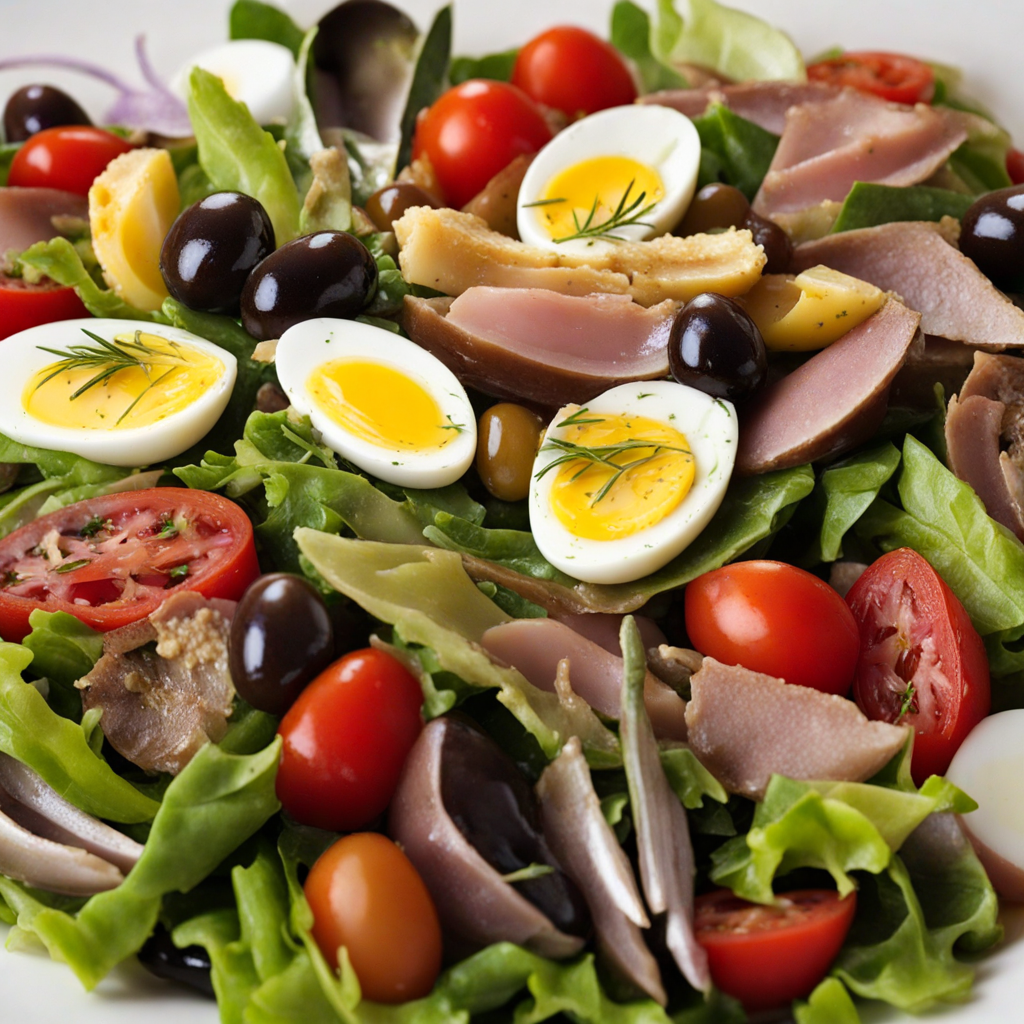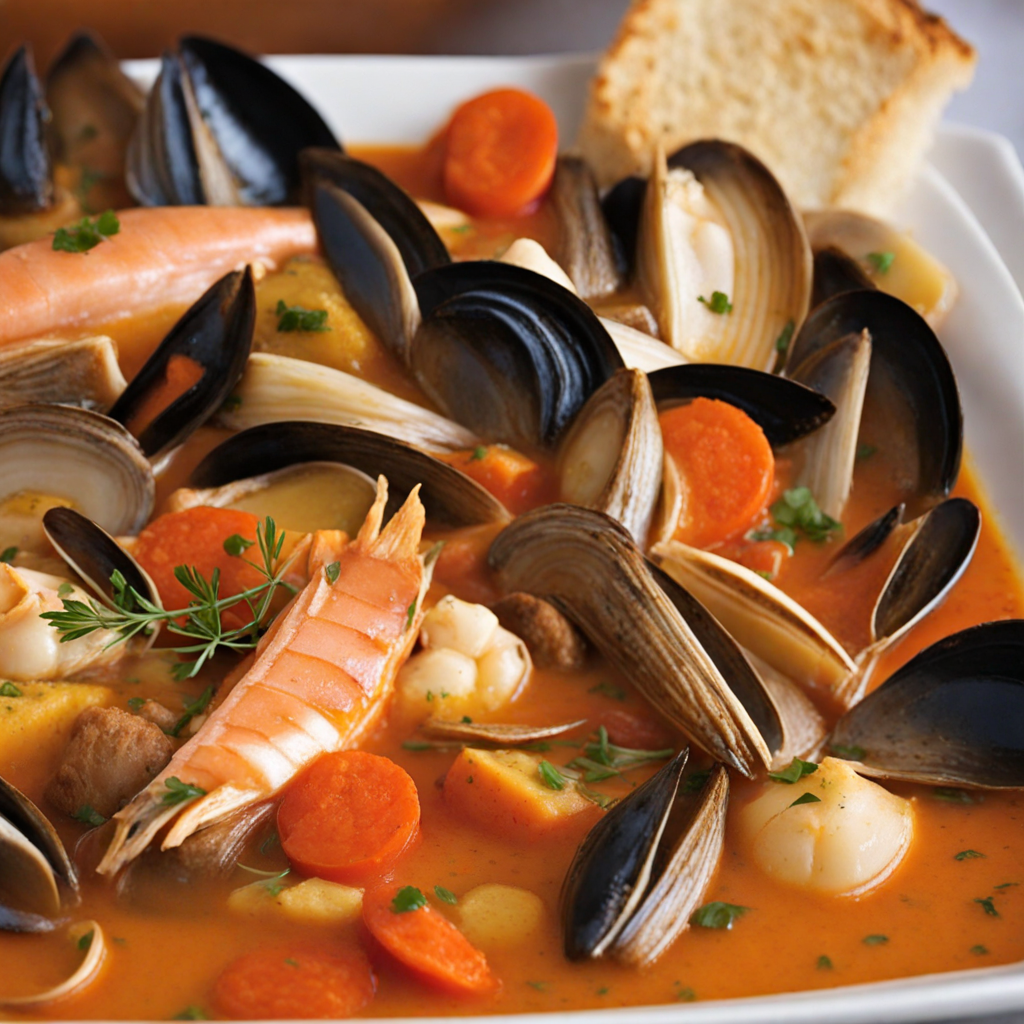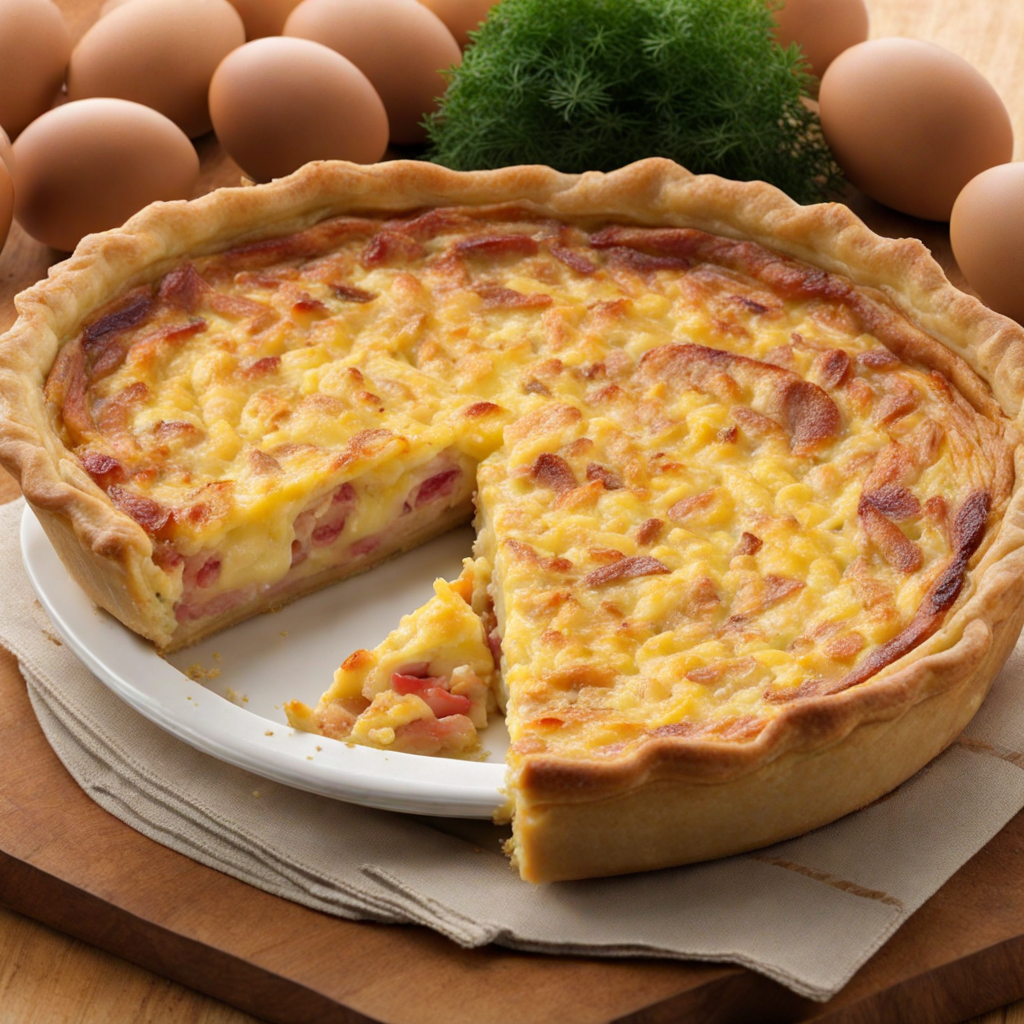Vol-au-vent
Vol-au-vent is a delightful French pastry that embodies the elegance and sophistication of French cuisine. This dish features a light and flaky puff pastry shell, which is carefully crafted to create a hollow center perfect for holding a variety of savory or sweet fillings. The name 'vol-au-vent' translates to 'flown in the wind,' aptly describing the airy and delicate texture of the pastry that seems to float on the palate. The crust is golden-brown and crisp, providing a satisfying contrast to the richness of its fillings, which can range from creamy mushroom and chicken mixtures to seafood or even sweet options like fruits and custards. When you take a bite of a vol-au-vent, you’re greeted with a burst of flavors and textures. The buttery layers of pastry flake apart effortlessly, leading to a warm, savory filling that often combines seasonal ingredients, herbs, and a touch of cream or sauce. This versatility allows for endless variations, making it a popular choice for both casual dining and elegant celebrations. The presentation of vol-au-vent is also a feast for the eyes, often adorned with a sprinkle of fresh herbs or a drizzle of sauce, elevating it to a gourmet experience. Traditionally served as an appetizer or a main course, vol-au-vent can be found in bistros and fine dining establishments across France. It is a dish that not only highlights the skill involved in pastry-making but also showcases the French culinary art of layering flavors and textures. Whether you're enjoying it at a quaint café in Paris or attempting to recreate it in your own kitchen, vol-au-vent promises to transport you to the heart of French gastronomy, inviting you to savor each bite.
How It Became This Dish
Vol-au-Vent: A Culinary Journey Through French History The culinary world is a tapestry woven with flavors, techniques, and stories, and few dishes encapsulate the elegance and refinement of French cuisine quite like vol-au-vent. This delicate pastry, renowned for its lightness and versatility, serves as a testament to the artistry of French cooking and its evolution through centuries. To understand vol-au-vent is to embark on a historical journey that reflects the shifting tides of culture, society, and gastronomy in France. Origins of Vol-au-Vent The term "vol-au-vent" translates literally to "windblown," a nod to its airy structure. Its origins can be traced back to the 17th century, during a period in France marked by culinary innovation and the rise of the French culinary elite. The dish is believed to have been popularized by the legendary chef Marie-Antoine Carême, often hailed as the father of haute cuisine. Carême, who cooked for the aristocracy and the early bourgeois class, introduced elaborate methods of preparation and presentation that elevated French cuisine to new heights. Vol-au-vent, in its earliest forms, was a simple puff pastry shell that was used to encase various fillings. It was a reflection of the era's fascination with intricate dishes that combined artistry and flavor. The pastry itself is made using a technique called lamination, which involves folding layers of dough and butter together to create a flaky, buttery texture. This technique was developed and refined during the Renaissance and became a hallmark of French pastry-making. Cultural Significance The cultural significance of vol-au-vent can be seen in its embodiment of French culinary values: refinement, simplicity, and versatility. It was often served at formal gatherings, banquets, and grand dinners, showcasing the host's culinary prowess while providing guests with a delightful dining experience. The dish became a symbol of sophistication, reflecting the opulence of French society, particularly during the reign of Louis XIV, who was known for his extravagant feasts that celebrated the abundance of the land. As the French Revolution unfolded in the late 18th century, the culinary landscape began to shift. The fall of the aristocracy led to a re-evaluation of luxury in food. Chefs who once served royalty became the backbone of the burgeoning restaurant culture, democratizing fine dining. Vol-au-vent transitioned from a dish reserved for the elite to one that graced the tables of the middle class. Its adaptability allowed chefs to experiment with fillings, which ranged from classic chicken fricassée to more exotic combinations like seafood and mushrooms, appealing to a wider audience. Evolution Over Time Throughout the 19th and 20th centuries, vol-au-vent continued to evolve as French cuisine absorbed influences from global trends. The industrial revolution brought about changes in food production and accessibility, making ingredients more readily available. This led to an explosion of creativity in the kitchen, with chefs playing with textures and flavors. In the late 19th century, culinary schools began to emerge, further professionalizing the art of cooking. This era saw the establishment of classical cooking techniques that are still taught today. Chefs began to document their recipes and techniques, leading to the publication of influential cookbooks, such as "Le Guide Culinaire" by Auguste Escoffier. Vol-au-vent found its place in these texts, often featured in sections dedicated to pastries and savory dishes. The popularity of vol-au-vent continued into the 20th century, where it became a staple in French bistros and brasseries. It was often served at family gatherings and celebrations, a dish that evoked nostalgia and comfort. The rise of nouvelle cuisine in the 1970s and 1980s led to a renewed interest in traditional dishes, with chefs experimenting with lighter, more health-conscious interpretations of classics, including vol-au-vent. Modern Interpretations In contemporary cuisine, vol-au-vent remains a beloved dish, demonstrating its timeless appeal. Chefs embrace the traditional preparation while also pushing the boundaries with innovative fillings and modern techniques. The classic chicken and mushroom filling may now be accompanied by a truffle cream sauce, or seafood blends might incorporate Asian flavors, such as ginger and soy sauce, reflecting the globalization of culinary influences. Moreover, the dish has found its way into popular culture, appearing in food blogs, cooking shows, and social media, where home cooks share their interpretations of this classic French dish. It serves as a reminder of the importance of culinary heritage while also encouraging experimentation and personalization. Conclusion Vol-au-vent is more than just a pastry; it is a culinary symbol that encapsulates centuries of French history, culture, and innovation. From its origins in the opulent kitchens of the French aristocracy to its place in the hearts and homes of modern diners, vol-au-vent has transcended time and trends. Its versatility and elegance ensure that it remains a cherished dish in French cuisine, capable of adapting to contemporary tastes while honoring its rich heritage. As we savor vol-au-vent, we not only enjoy its delightful flavors and textures but also partake in a story that spans generations—a narrative of transformation, creativity, and the enduring love of food that unites us all. Whether served at an extravagant banquet or a cozy family dinner, vol-au-vent continues to be a testament to the artistry of cooking and the cultural significance of French gastronomy.
You may like
Discover local flavors from France



